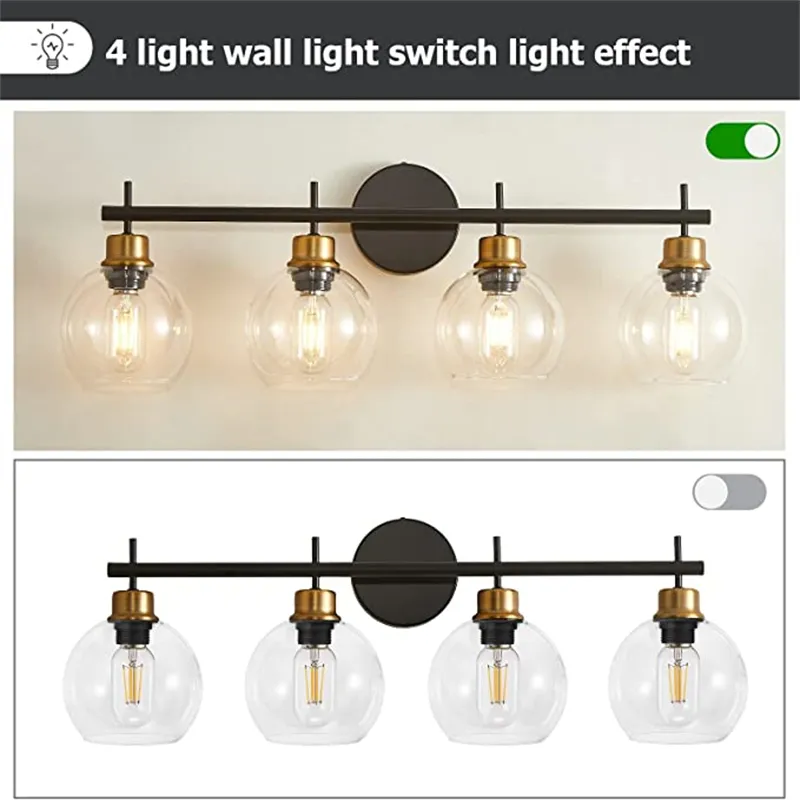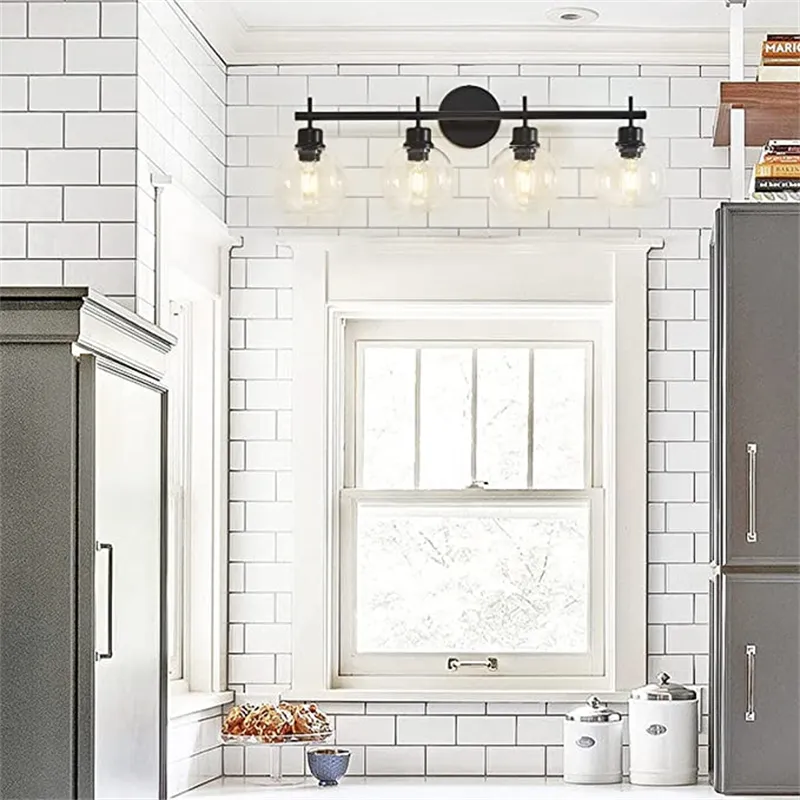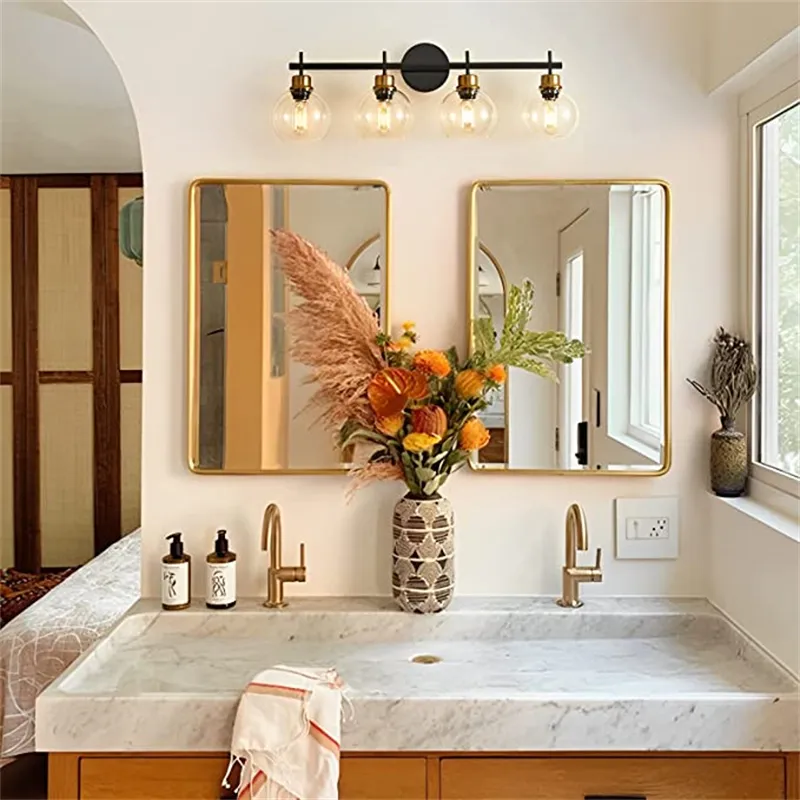Can bathroom vanity light fixtures be hung above a mirror?
In modern bathroom design, bathroom vanity light fixtures are more than just light sources; they are crucial elements influencing the spatial hierarchy and visual comfort. For many families, installing bathroom vanity light fixtures above a mirror seems like the most natural choice—saving space and directly illuminating the face. However, some people worry about the rationality, safety, and ideal lighting effect of this installation method.
This article will systematically analyze whether bathroom vanity light fixtures can be hung above a mirror, providing detailed explanations from multiple perspectives, including light distribution, installation height, safety standards, and aesthetic proportions, to help you scientifically determine and correctly install bathroom vanity light fixtures.

Is it feasible to hang bathroom vanity light fixtures above a mirror?
The answer is: Yes, but certain installation principles and conditions must be met.
From a lighting design perspective, installing bathroom vanity light fixtures above a mirror is a common and widely accepted lighting method. It can directly illuminate the entire face, avoiding shadows concentrated on the chin or eyes. However, whether this installation method achieves the desired effect depends on the type of light fixture, installation height, light angle, and spatial layout.
Main reasons for its feasibility:
• Concentrated and natural light: Overhead lighting covers most of the face, making it especially suitable for daily washing and grooming.
• Space saving: Compared to side mounting, overhead mounting saves more wall space, making it particularly suitable for small bathrooms.
• Strong visual balance: Light fixtures positioned above the mirror create a sense of spatial symmetry, enhancing overall aesthetics.
However, several points need to be considered:
• If the installation position is too high, the light will shine directly downwards, creating shadows on the face.
• If the size or brightness of the light fixture is unsuitable, it can lead to glare or uneven lighting.

What is the ideal height for bathroom vanity light fixtures to be suspended above a mirror?
Determining the installation height of bathroom vanity light fixtures is key to ensuring both lighting effectiveness and user comfort.
1. Recommended Height
When installing a light fixture above a mirror, the ideal height is:
• The bottom of the light fixture should be approximately 190-200 cm from the ground.
• Or, maintain a distance of approximately 5-10 cm between the light fixture and the upper edge of the mirror.
This height allows the light to illuminate the face at a moderate angle, avoiding direct sunlight on the eyes and reducing shadows.
2. Factors Affecting Height Selection
• User Height: If family members are generally tall, the light fixture position can be appropriately raised; conversely, it should be lowered.
• Mirror Size: The higher the mirror, the higher the light fixture can be installed to ensure the light covers the entire reflective surface.
• Light Fixture Type: Linear LED lights, downlights, and spherical lights have different beam angles, and the installation height should be adjusted slightly accordingly.
3. Consequences of Too High or Too Low Height
• Too High: The light angle is too steep, resulting in noticeable shadows below the face.
• Too Low: It can be glaring, with light concentrated in the lower middle area, resulting in uneven lighting.
Therefore, the ultimate principle for hanging bathroom vanity light fixtures should be "even illumination of the face."

Which types of bathroom vanity light fixtures are suitable for installation above a mirror?
Not all bathroom lights are suitable for installation above a mirror. Choosing the right type of fixture is crucial.
1. Linear LED bathroom vanity light fixtures
The most common and ideal choice. Even light distribution, customizable length to fit the mirror width.
• Advantages: Stable lighting, low energy consumption, no noticeable shadows.
• Recommended length: Approximately 70%~80% of the mirror width.
2. Recessed or spotlight-style bathroom vanity light fixtures
Suitable for localized lighting needs, such as supplemental lighting.
• Advantages: Adjustable angle, focused illumination.
• Disadvantages: Limited illumination range per lamp, requires multiple lamps.
3. Wall-mounted spherical or lampshade lights
Suitable for creating a soft ambiance, commonly found in European or American bathroom styles.
• Advantages: Soft light, not glaring.
• Disadvantages: Limited light intensity, requires careful attention to brightness settings.
What are the key points for installing bathroom vanity light fixtures above a mirror?
Proper installation ensures both safety and aesthetics. Here are the key points to consider when installing bathroom vanity light fixtures:
1. Centered Installation
The fixture should be perpendicularly aligned with the center line of the mirror, maintaining symmetry. This not only ensures even lighting but also enhances visual balance.
2. Leave a Safe Gap
A 5-10 cm gap should be left between the bottom of the fixture and the mirror surface to prevent moisture buildup that could cause fogging or short circuits.
3. Choose Fixtures with a Satisfactory Waterproof Rating
Baby humidity is high; it is recommended to choose waterproof fixtures with an IP44 rating or higher to effectively prevent moisture penetration.
4. Avoid Direct Contact with Steam Sources
If the mirror faces the shower area or water heater, maintain a horizontal distance of at least 60 cm to reduce the impact of hot steam on the fixture's lifespan.
How to Choose the Size of Wall-Mounted Bathroom Vanity Light Fixtures?
The size of the light fixture affects the lighting coverage and the overall sense of spatial harmony.
1. Length Selection
•Recommendation: The fixture length should be approximately 70%~80% of the mirror width.
•If the mirror width is 100 cm, a fixture length of 70~80 cm is most harmonious.
2. Thickness and Projection Distance
•The fixture thickness should be controlled at 5~8 cm to ensure heat dissipation without affecting visual balance.
•Too much distance from the wall will create shadows; too little distance will affect light diffusion.
3. Brightness Matching
• For small bathrooms, 500~700 lumens is recommended;
• For medium-sized bathrooms, 800~1000 lumens can be increased;
• If the mirror is wide, consider dual-light setup.

Will wall-mounted bathroom vanity light fixtures create shadows?
Many people worry that hanging bathroom vanity light fixtures above a mirror will create shadows on their face. In reality, this problem can be completely avoided if the fixtures are designed properly and installed correctly.
1. Causes of Shadows
• Fixtures installed too high or at too steep an angle;
• Light too concentrated on the overhead area;
• Lack of auxiliary light sources (such as side lights or ceiling lights).
2. Solutions
• Choose fixtures with frosted covers to soften the light.
• Adjust the angle of the fixtures to allow the light to illuminate the face at a 30°~45° angle.
• If the shadows are still noticeable, supplement with side wall lights.
3. Ideal Light Characteristics
• Even, soft, and without obvious shadows;
• Natural skin tone reproduction;
• No glare or harsh reflections.
How to Harmonize the Proportions of Hanging Bathroom Vanity Light Fixtures with the Mirror?
Imbalanced proportions are a common problem in many bathroom lighting designs. A fixture that is too short or too long will ruin the overall aesthetic.
1. Light Fixture to Mirror Ratio
The length of the light fixture should be 70%–90% of the mirror's width; the center of the light fixture should be aligned with the center of the mirror.
2. Light Fixture to Washbasin Ratio
The width of the light fixture should not exceed the width of the washbasin; symmetry is key, especially in double washbasin layouts.
3. Matching Light Fixture Shape to Mirror Frame Style
Natural bathrooms are suitable for linear LED lights; retro-style bathrooms can use metal or glass spherical lights.
How to Ensure Safety for Bathroom Vanity Light Fixtures Hanging Above the Mirror?
The bathroom environment is humid, making electrical safety especially important.
1. Choose Waterproof Fixtures
As mentioned earlier, it is recommended to use fixtures with an IP44 or higher rating to effectively prevent water splashes from entering the electrical circuits.
2. Use Anti-Fog Materials
Some bathroom vanity light fixtures use anti-fog acrylic covers or frosted glass to reduce condensation.
3. Keep away from damp areas
If the mirror is located near the shower area, a waterproof partition or glass screen should be added.
4. Standardize wiring
Lighting fixtures should be installed by a professional electrician. All wiring should be protected with moisture-proof sleeves, and connections should be insulated.
If hanging above the mirror is not suitable, what are some alternatives?
While feasible in most cases, there are other alternatives if the bathroom layout or mirror placement is not ideal:
• Vertically install bathroom vanity light fixtures on both sides of the mirror: Light shines from both sides, providing the most even illumination with almost no shadows.
• Backlit mirror design: Install LED light strips behind the mirror for soft, comfortable lighting.
• Recessed ceiling lights combined with vanity lights: Creates layered lighting effects, suitable for large bathrooms.
Are Huari Lighting’s products energy-efficient and eco-friendly?
Yes, energy saving is one of our brand’s core principles. Every LED product we produce is designed for low power consumption, long lifespan, and minimal environmental impact. Our ISO 14001 certification ensures eco-friendly production processes, while RoHS and ERP compliance confirm that all items meet international sustainability standards.
For importers and retailers promoting green products, Huari offers the perfect mix of performance, reliability, and affordable prices.
